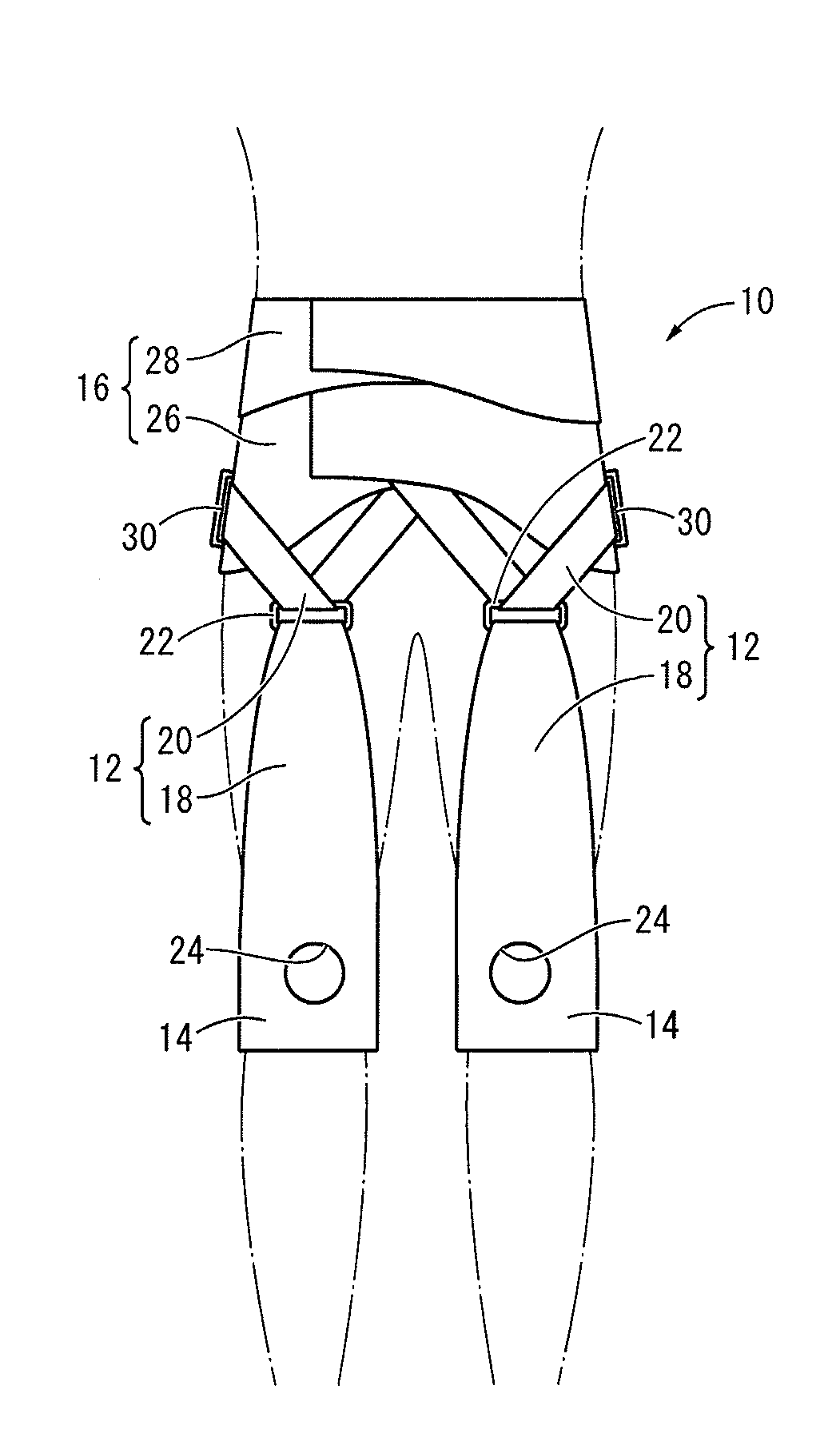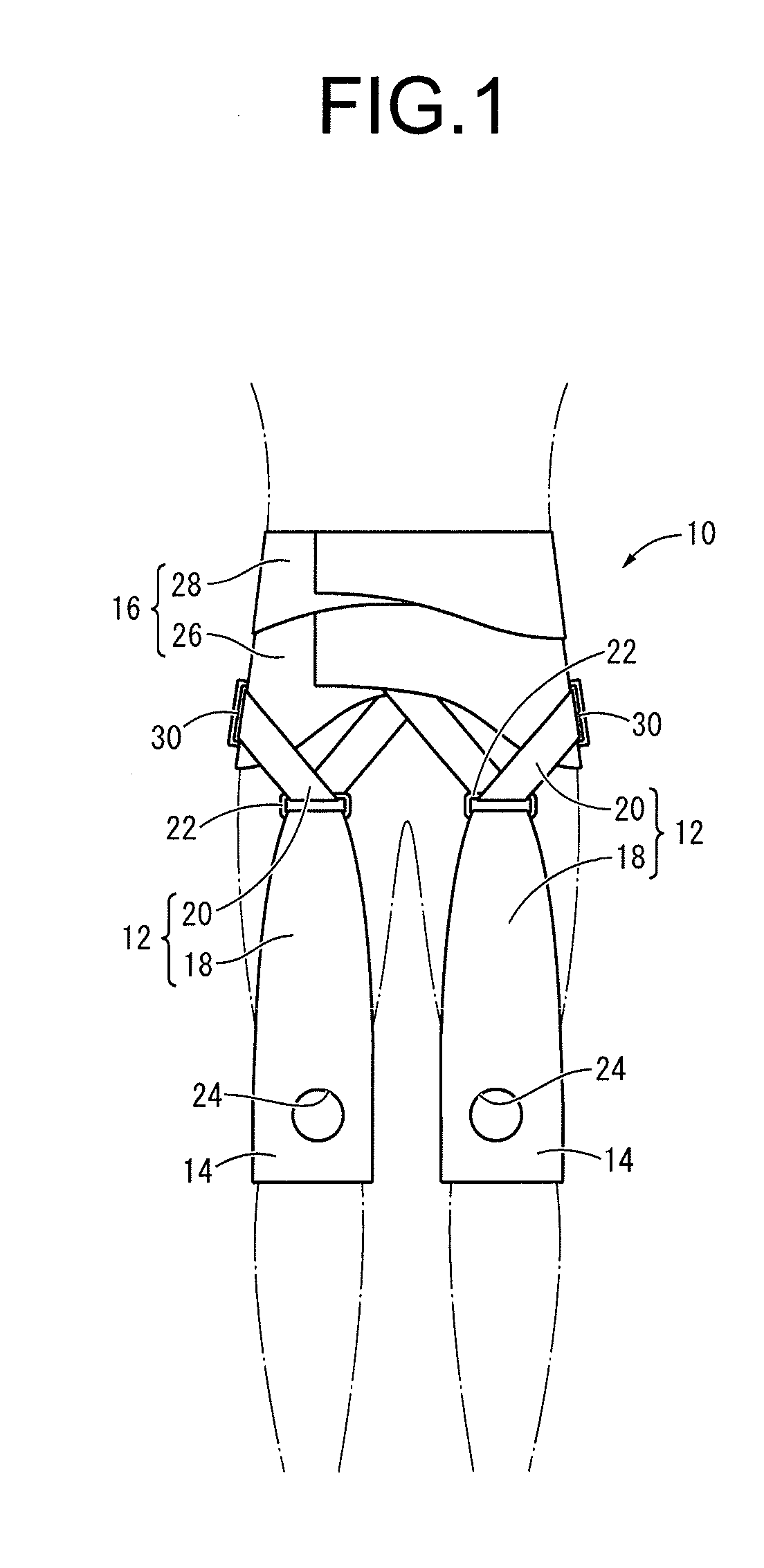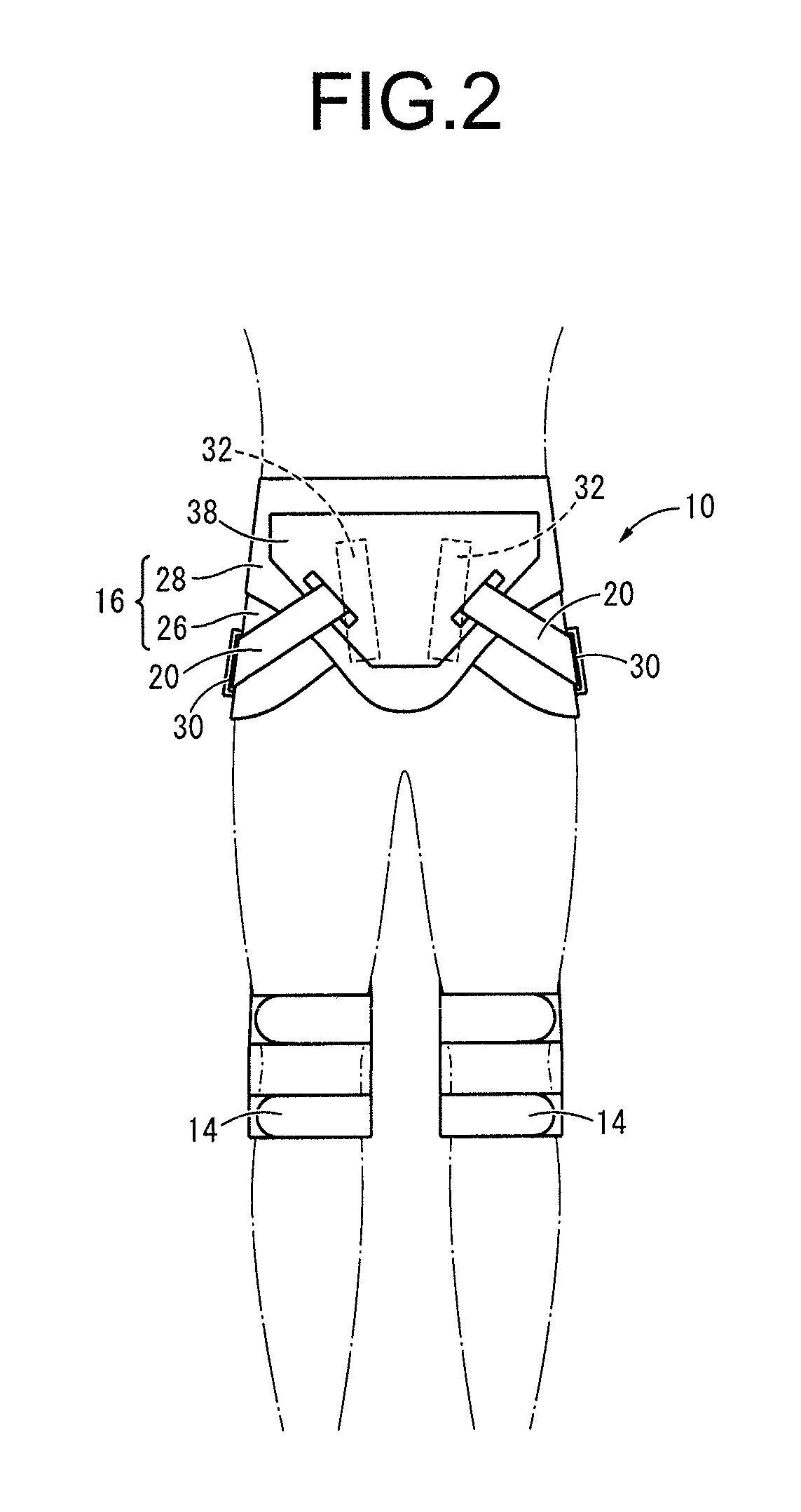Device for assisting joint exercise
a technology for assisting joints and joints, applied in the field of assisting joints, can solve the problems of difficult use of exoskeleton type assistance devices, inconvenient maintenance, and large effort and time, and achieve the effects of convenient adjustment, excellent maintenance, and convenient adjustment of the length of the assist force transmission band 82
- Summary
- Abstract
- Description
- Claims
- Application Information
AI Technical Summary
Benefits of technology
Problems solved by technology
Method used
Image
Examples
first embodiment
[0052]FIG. 1 and FIG. 2 show a device for assisting joint exercise 10 as the present invention. The device for assisting joint exercise 10 is for assisting bending and extending of the hip joints, and has a constitution including assist force transmission bands 12, 12 as a pair of assist force transmission sections at left and right extending across the hip joints, and a first mounting section 14 and a second mounting section 16 respectively attached to both end parts of the assist force transmission bands 12, 12 so that the first mounting section 14 is attached to one side and the second mounting section 16 is attached to the other side sandwiching the hip joints. In FIG. 1 and FIG. 2, the device for assisting joint exercise 10 is shown in a state worn by the user, and the outline of the user is shown by a double-dot-dash line. Also, in the description hereafter, the front surface means the surface on the user's abdominal side (front surface), the rear surface means the surface on ...
third embodiment
[0088]Also, FIG. 7 and FIG. 8 show a device for assisting joint exercise 60 as the present invention. This device for assisting joint exercise 60 has a main unit 62 exhibiting a pants (leggings) shape which adheres tightly to the body surface covering from the lower back to below the knees. This main unit 62 is formed with fabric that has excellent stretch properties that allow elastic deformation according to the user's body shape, and deforms according to the user's body shape or the like.
[0089]Also, an assist force transmission section 64 is provided on the main unit 62. The assist force transmission section 64 is a thin band shaped fabric, and is equipped integrally with a first traction section 66 extending vertically so as to cover the front surface of the thigh, and a second traction section 68 extending diagonally upward branching left and right at a designated angle from the top end of the first traction section 66. Also, both the first traction section 66 and the second tr...
fourth embodiment
[0095]FIG. 9 shows a device for assisting joint exercise 80 as the present invention. The device for assisting joint exercise 80 has a constitution by which an assist force transmission band 82 as the assist force transmission section connects the first mounting section 14 and the second mounting section 16.
[0096]The assist force transmission band 82 is constituted including a first traction band 84, a second traction band 86, and a third traction band 88. The first through third traction bands 84, 86, and 88 are respectively formed with thin band shaped fabric extending at a generally fixed width dimension. The first and second traction bands 84 and 86 are made to be elastically deformable in the lengthwise direction (in FIG. 9, the vertical direction) which is the action direction of the tensile force by the electric motor 40 of the drive device 38, while the third traction band 88 has elastic deformation restricted in the lengthwise direction. Also, an adjustable fitting 90 is pr...
PUM
 Login to View More
Login to View More Abstract
Description
Claims
Application Information
 Login to View More
Login to View More - R&D
- Intellectual Property
- Life Sciences
- Materials
- Tech Scout
- Unparalleled Data Quality
- Higher Quality Content
- 60% Fewer Hallucinations
Browse by: Latest US Patents, China's latest patents, Technical Efficacy Thesaurus, Application Domain, Technology Topic, Popular Technical Reports.
© 2025 PatSnap. All rights reserved.Legal|Privacy policy|Modern Slavery Act Transparency Statement|Sitemap|About US| Contact US: help@patsnap.com



